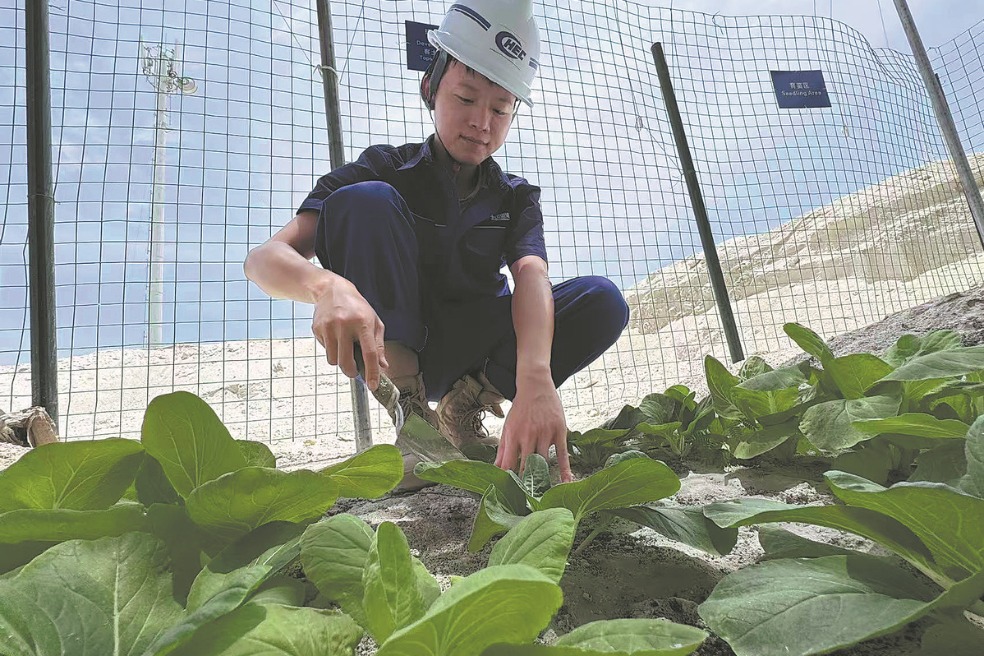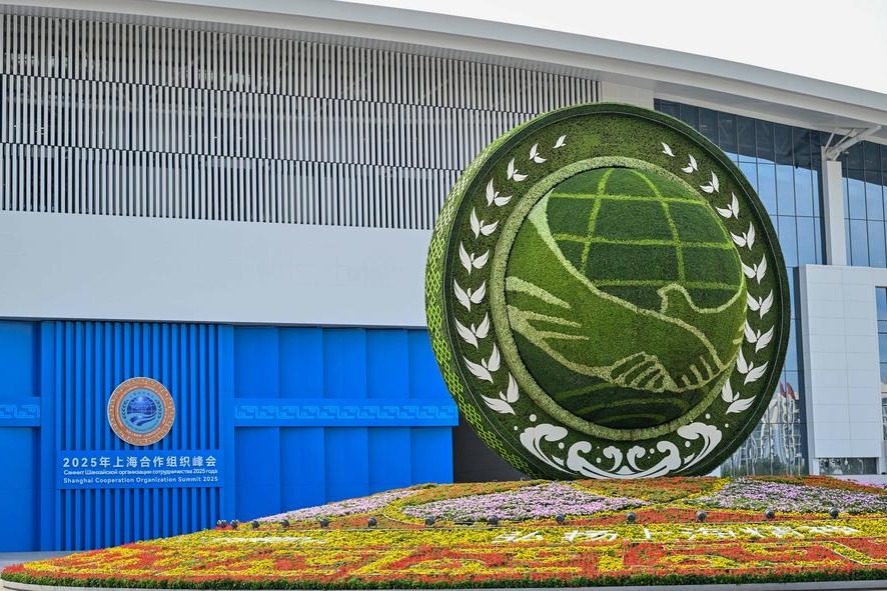Smart policies, location key to Tianjin FTZ success
Airbus expected to open its second final assembly line in city's Binhai New Area early next year

Cargo ships carrying large Airbus A320 aircraft components arrived at Tianjin Port earlier this month, before being transported to the European aircraft manufacturer's final assembly line in Tianjin's Binhai New Area, where they will be assembled into passenger aircraft ready to take to the skies.
The Tianjin campus, which began production in 2008, was Airbus' first civil aircraft final assembly line outside of Europe. So far, the FAL has delivered more than 750 A320 family aircraft.
In addition to Tianjin, Airbus operates A320 family final assembly sites in Hamburg, Germany; Toulouse, France; and Mobile, Alabama in the United States.
Currently, Chinese airlines operate some 2,300 Airbus aircraft in China, its largest single-country market. The number accounts for over 50 percent of the market share in China, one-third of which were delivered from Tianjin.
The plane maker said it is expanding the A320 aircraft's final assembly capacity in Tianjin, with a second line expected to enter into operation early next year. The second line will not only expand production capacity in China, but also help satisfy demand from the global aviation market.
"China stands as an important strategic partner of Airbus' global map, and we will continue to insist on the 'in China, for China' business strategy," said George Xu, Airbus executive vice-president and Airbus China CEO.
"Now, the entire global supply chain system can't meet the growing demand worldwide. Airbus' delivery volumes haven't reached the peak levels of the pre-pandemic period of 2019. The supply chain requires further strengthening of capacity," he added.
The plane maker said that Chinese suppliers have shown strong motivation and intention to meet the manufacturing criteria of Airbus. The plane maker applies the same standards and methodologies of manufacturing in China, Europe and everywhere else in the world.
"Our cooperation with China has achieved extraordinary success," said Erik Buschmann, chief operating officer of Airbus China.
China's civil aviation market has been resilient and shown rapid growth. Last year, Airbus forecast that in the next two decades, the country will need 9,520 new passenger and cargo aircraft, accounting for over 20 percent of the total demand globally, and the total fleet size is expected to reach 11,160.
At the Tianjin center, a facility that spans 590,000 square meters, all necessary support facilities, including a large component warehouse, final assembly workshop, paint shop and delivery area are fully equipped. Fuselage sections and wings transported from Europe and China have been assembled, painted and ultimately delivered to airlines there.
Currently, the assembly line has the production capacity for the entire range of A320 single-aisle aircraft models, including the A321neo, shaping an aviation industry cluster encompassing manufacturing, maintenance and logistics, and becoming a key node in Airbus' global supply chain.
In the past few years, the A320 family aircraft's final assembly line has served the Chinese market and continuously expanded its international customer base, with delivered aircraft flying to Europe, Asia and the Middle East, joining the fleets of British low-cost carrier easyJet, Hungary's Wizz Air and Cebu Pacific from the Philippines.
"The newly built second final assembly line of Airbus in Tianjin will help double the production capacity of the single-aisle aircraft and further attract core suppliers such as Collins Aerospace and Safran Group to establish operations locally, thus driving the localized production of key aircraft components such as wings and nacelles," said Yin Li, director of the aviation industry development bureau of the Tianjin Port Free Trade Zone.
"This will help upgrade the local aviation manufacturing industry chain and enhance Tianjin's position in the global aviation industry landscape," he added.
Zou Jianjun, a professor at the Civil Aviation Management Institute of China, said the increase in the delivery capability of Airbus' final assembly line in Tianjin shows the attractiveness of the China market for Airbus and it regards Tianjin as an important facility.
"It demonstrates Airbus' recognition of the development of China's civil aviation industry chain and the country's final assembly capacity of civil aircraft, and reflects its recognition of China's investment environment," Zou said.
The Binhai New Area in Tianjin serves as a strategic cooperation zone for the coordinated development of the Beijing-Tianjin-Hebei region and the core area of Tianjin's "One Base and Three Zones" initiative. It boasts a solid manufacturing foundation, providing a fertile ground for the extension of the aviation industry chain and the aggregation of high-value-added industries.
Additionally, it leverages the dual advantages of its maritime port and airport, utilizing innovative models such as integrated Customs clearance to create efficient and cost-effective logistics channels for businesses.
Under the leadership of flagship projects like Airbus, a large number of upstream and downstream supporting enterprises have gathered and developed, forming a resilient and competitive aviation industry cluster.
"In the future, we will continue to optimize the business environment through institutional innovations in the free trade zone, promote industrial upgrading and transformation, and inject strong momentum into the high-quality development of the regional economy," said Shan Zefeng, head of the Binhai New Area government.
Airbus' development in Tianjin is not isolated. Leading aviation companies such as Bombardier and Goodrich have also established operations there, making the bonded zone the largest Airbus production base outside Europe and an important aviation manufacturing and maintenance base in the Asia-Pacific region.
Global 500 multinational corporations in the high-end equipment-manufacturing sector, including Caterpillar, General Electric Healthcare, JLG and Honeywell, have also invested and established operations there.
In 1991, the Tianjin Port Free Trade Zone was established as the second national and first northern free trade zone, providing an important platform for the northern region of China to attract foreign firms and deepen reform and opening-up.
Latest data from the Binhai New Area show that foreign-invested enterprises account for over 60 percent of the total in the China (Tianjin) Pilot Free Trade Zone, which comprises three special zones in Binhai New Area, Tianjin Port and Tianjin airport.
Companies from 150 countries and regions have invested there, forming industrial clusters in aviation manufacturing, maintenance, services, logistics and the low-altitude economy.
All of this has been made possible by the continuously improving policy environment in the Tianjin Port Free Trade Zone and the entire Binhai New Area.
"The characteristics of our foreign investment are 'stable foundation, strong momentum, high quality and excellent service'," said Bao Jian, director of Binhai New Area commerce promotion bureau.
"To date, companies from 150 countries and regions have invested here, establishing over 20,000 enterprises, among which 240 Fortune 500 companies have invested in 2,161 enterprises," he added.
"This is the largest elevator factory among our 17 global facilities, and we love working here and making life better," said Judy Marks, chairman, president and CEO of Otis Worldwide Company. "I can't think of a better place than Tianjin."
With support of the development environment in the Binhai New Area, Otis has continuously expanded its presence in Tianjin, gradually establishing a comprehensive infrastructure from manufacturing facilities to research and development centers, driving its business expansion in China and across the Asia-Pacific region.
The 14th Five-Year Plan (2021-25) clearly states that China should promote higher-standard opening-up and create new heights of institutional openness.
Since its establishment, the Tianjin Free Trade Zone has taken the lead in implementing reforms such as "separation of licenses and permits" and "one license per enterprise", introducing more than 600 institutional innovations, 49 of which have been replicated and promoted nationwide.
Yan Caiming, general manager of PPG Asia-Pacific, pointed out that the government can create an excellent environment for enterprises, enabling them to provide the best products to society and the market.
Currently, 55 foreign-invested enterprises, including PPG and Unilever, have established R&D centers in the bonded zone, deeply engaging in local innovation.
Twenty-four enterprises, including Novo Nordisk and Otis Elevator, have established regional headquarters, development centers, and manufacturing plants or offices in Tianjin.
Bao Jian, director of the Binhai New Area commerce promotion bureau, emphasized that high-quality services are an important guarantee for attracting foreign investment.
Bao mentioned that over the past five years, the Binhai New Area has organized officials to visit foreign-invested enterprises every year, engaged in exchanges with enterprises through roundtable meetings, afternoon tea and other formats, and helped to solve more than 200 practical problems.
"This kind of service is very important," said Sang Shuo, chairman and general manager of Ehmann Alloy Materials Tianjin Co Ltd. "We hope that the economic development zone will continue to maintain its consistent advantages."
Liu Zixuan and Lu Ruotong contributed to this story.

Today's Top News
- Overhaul pledged after pre-made meal controversy
- US push on tariffs condemned
- Promoting international rule for fairer global governance
- Madrid talks show negotiations remain the best way forward: Editorial flash
- China, US reach basic consensus on TikTok
- Nation's growth steady amid headwinds






























